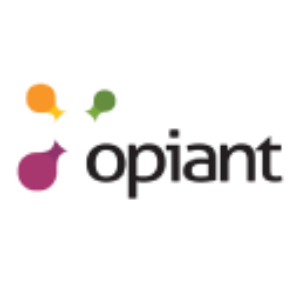Opiant Pharmaceuticals Announces Positive Pharmacokinetic, Safety, and Tolerability Results From a Multi-Dose Study for OPNT003, Nasal Nalmefene
Opiant Pharmaceuticals (NASDAQ: OPNT) announced positive topline results from a pharmacokinetic study for OPNT003, an investigational nasal nalmefene treatment for opioid overdose. Conducted with 23 healthy subjects, the study demonstrated rapid nasal absorption (Tmax 15 min), dose-proportional plasma concentrations, and a long plasma half-life (~11h). OPNT003 was safe and well tolerated. These findings support the upcoming New Drug Application (NDA) submission due to the FDA's request. The ongoing research also compares nasal nalmefene against nasal naloxone to enhance opioid overdose treatment.
- Demonstrated rapid nasal absorption (Tmax 15 min).
- Dose-proportional plasma concentrations confirmed.
- Long plasma half-life (~11h) of nalmefene verified.
- Study confirmed OPNT003 is safe and well tolerated.
- None.
Insights
Analyzing...
SANTA MONICA, Calif., Feb. 10, 2022 (GLOBE NEWSWIRE) -- Opiant Pharmaceuticals, Inc. (“Opiant”) (NASDAQ: OPNT) today announced positive topline results from a multi-dose pharmacokinetic (“PK”) study for OPNT003, nasal nalmefene, an investigational treatment for opioid overdose. The crossover design study was conducted in 23 healthy subjects comparing the PK profile, safety, and tolerability of OPNT003 when given as a single 3mg dose in one nostril, as a single dose in each nostril, and as two doses in one nostril.
Summary of topline results for OPNT003, nasal nalmefene:
- Demonstrated rapid nasal absorption (Tmax 15 min) in all three study arms
- Showed dose proportional plasma concentrations whether administered as a single dose in each nostril or as two doses in a single nostril
- Confirmed the long plasma half-life (t1/2 ~ 11 h) of nalmefene
- Demonstrated nasal nalmefene is safe and well tolerated when administered in multiple doses
Opiant carried out the study at the request of the U.S. Food and Drug Administration (“FDA”) and will include these data as part of its New Drug Application (“NDA”) submission this year.
“We are pleased that this study has met our objective of demonstrating safety, tolerability, and pharmacokinetic equivalence across multiple nasal doses,” said Roger Crystal, M.D., President and Chief Executive Officer of Opiant. “These data are fully consistent with the rapid delivery of high plasma concentrations of nalmefene observed in our previous OPNT003-PK-001 study, which compared 3 mg nasal nalmefene to a previously approved intramuscular dose. We look forward to completing our assessment of the potential of OPNT003 for treating opioid overdose with the ongoing pharmacodynamic study comparing nasal nalmefene with nasal naloxone.”
In 2021, the FDA granted Fast Track Designation to OPNT003. Opiant is currently completing a pharmacodynamic (“PD”) study comparing nasal nalmefene with nasal naloxone in reversing respiratory depression produced by remifentanil, a synthetic opioid. In a confirmatory PK study, conducted last year, OPNT003 exhibited both rapid absorption (Tmax 15 min) and high plasma concentrations (Cmax 12.2 ng/ml) that surpassed intramuscular nalmefene, as well as a comparable long duration. These are attributes that support OPNT003 as a potential major advance in opioid overdose reversal. OPNT003 is being developed using a 505(b)(2) pathway, with PK and PD studies supporting NDA submission.
Opioid overdose is a significant public health crisis that has been exacerbated by the increased availability and abuse of synthetic opioids, such as fentanyl. In a 12-month period that ended in June 2021, over 76,000 people in the U.S. died from an opioid overdose1.
About Opiant Pharmaceuticals, Inc.
Opiant Pharmaceuticals, Inc., the company that developed NARCAN® Nasal Spray, is building a leading franchise of new medicines to combat addictions and drug overdose.
For more information visit: www.opiant.com.
Forward-Looking Statements
This press release contains forward-looking statements. These statements relate to future events or our future financial performance and involve known and unknown risks, uncertainties and other factors that may cause our actual results, levels of activity, performance or achievements to be materially different from any future results, levels of activity, performance or achievements expressed, implied or inferred by these forward-looking statements, and among other things, our ability to maintain cash balances and successfully commercialize or partner our product candidates currently under development. In some cases, you can identify forward-looking statements by terminology such as "may," "will," "should," "could," "would," "expects," "plans," "intends," "anticipates," "believes," "estimates," "predicts," "projects," "potential," or "continue" or the negative of such terms and other comparable terminology. These statements are only predictions based on our current expectations and projections about future events. You should not place undue reliance on these statements. Actual events or results may differ materially. In evaluating these statements, you should specifically consider various factors. Additional factors that could materially affect actual results can be found in our Form 10-K for the year ended December 31, 2020, filed with the Securities and Exchange Commission on March 4, 2021, including under the caption titled "Risk Factors." These and other factors may cause our actual results to differ materially from any forward-looking statement. We undertake no obligation to update any of the forward-looking statements after the date of this press release to conform those statements to reflect the occurrence of unanticipated events, except as required by applicable law.
For Media and Investor Inquiries:
Ben Atkins, Opiant
(310) 598-5410
batkins@opiant.com
- Ahmad FB, Rossen LM, Sutton P. Provisional drug overdose death counts. National Center for Health Statistics. 2022.








